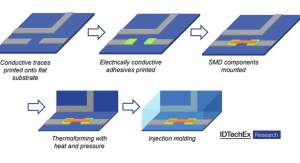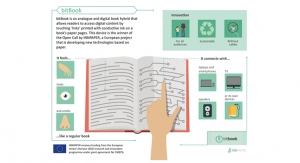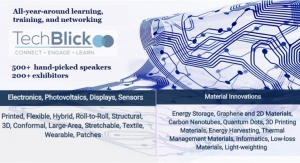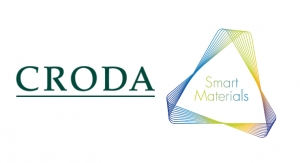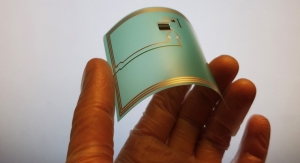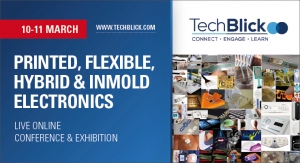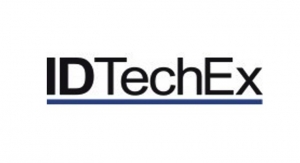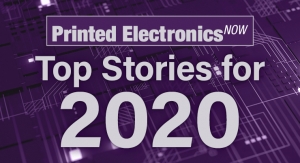The major factors that are expected to be driving the conductive inks market are growing demand in the electronic industry and increasing demand for efficiency and miniaturization of devices.
The conductive inks market has been classified based on type into silver inks, copper inks, carbon nanotube inks, carbon/graphene inks, conductive polymer and others. Silver inks are widely used in the photovoltaic application and are hence the most preferred type. The upcoming trend of integration of different technologies is being driven by the use of silver inks.
Based on the end-use industry, the conductive inks market has been segmented into photovoltaics, membrane switches, displays, automotive, bio-sensors, RFID, PCB, thermal heating and others. RFID application is projected to register the highest CAGR during the forecast period. The use of conductive inks in the printing of RFID chips has several benefits, such as a reduction in size and faster and more efficient production, which results in a cheaper cost of production. The rising demand for RFID tags is expected to drive the growth of the market.
APAC is estimated to be the leading conductive inks market. The growth in the APAC region can be attributed to the growing demand for conductive inks due to the high economic growth of the emerging economies and the increasing disposable income in the region contributes to APAC being an attractive market for conductive inks manufacturers. Moreover, the tremendous growth of the photovoltaics, PCBs, touchscreen segments and the increasing use of windshield sensors in vehicles are primarily responsible for the high demand for conductive inks in the region.
Governments worldwide have imposed environmental regulations to encourage industries for reducing the number of heavy materials used in any device by replacing them with lightweight advanced materials. Along with this factor, the consumer preference for small and lightweight electronics has increased the demand for miniaturization of products in the consumer electronics industry. Lightweight construction is used to improve functional characteristics, reduce material input, and save energy. Conductive inks are efficient, effective, and reliable and are widely used as a replacement for conventional wire and circuit arrangement to enhance efficiency and reduce the weight of electronic components.
The use of conductive inks offers the following properties:
- Reduced material density
- Lower component weight
- Easy handling
Conductive inks are produced either by incorporating different types of metals such as silver and copper or by using carbon particles. Carbon particles are preferred in many applications as they offer adequate technical properties at a low cost. In comparison to other metals, carbon inks have relatively less and unreliable conductivity. While using carbon particles, direct conductivity can only be achieved through curing, but this is a complicated and expensive process.
The major factor acting as a restraint for the conductive inks market growth is the lack of chemical compatibility with most of the polymers, which is necessary to provide mechanical endurance. In addition, there is a need to develop technologies that can impart long-term stability of conductive inks for commercial purposes. This issue is mainly faced with nanoparticle inks, as the technologies required for its use are expensive. Emerging applications have increased the need for optimizing the use of conductive inks in specialized printing processes.
Despite these shortcomings, the increased focus on innovation and R&D activities is expected to provide cost-efficient and reliable technologies for conductive inks in the future.
There is a need for more economical alternatives to silver-based conductive inks owing to the rising prices of silver. Graphene-based conductive inks have come up as an alternative. Graphene is a single layer of carbon atoms and is the most conducive form of carbon. It can provide mechanical flexibility and high performance at a low cost and can help in protecting metals from corrosion. Graphene-based conductive inks can be used in complex devices to achieve high conductivity even at intricate levels.
Conductive inks are mainly made by using materials such as silver, copper, and carbon. Silver is highly conductive, but expensive, whereas copper is cheaper, but is more prone to oxidation. On the other hand, graphene is a beneficial alternative for these materials and can deliver the same properties at much cheaper rates. Graphene-based conductive inks can readily compete with silver-based and carbon-based conductive inks in applications such as displays and RFID antennae.
The use of graphene-based conductive inks is still in the development stage and is likely to be commercialized in the future. Various companies are resorting to this alternative to offer effective solutions for both price and performance, thereby, creating an opportunity for conductive inks manufacturers.
Silver is one of the most widely used metals in the electronics industry because of its high conductivity, oxidation stability, and other unique properties. However, the fluctuations in silver prices have created a shift toward low-cost conductive metals such as copper, carbon, graphene, and aluminum.
The increased cost of silver has generated a need to either reduce the use of expensive materials or replace them. However, the properties of the alternatives that are being offered are marginally at par with silver. A complete replacement of silver with alternative materials is impossible.
In order to reduce the effect of rising silver prices, conventional silver conductive inks are being replaced with other inks such as silver flakes and nano silver-based inks. These inks provide equivalent conductivity; however, the quantity of silver used is relatively lesser than conventional conductive inks. In spite of these advantages, the use of nanosilver inks has not yet gained an impetus. The technology and tools required for their use add to the cost of the inks, which is much higher than that of the traditional silver inks and pastes.
The manufacturers are developing substitutes for silver-based conductive inks as the prices of silver are expected to increase in the future. Although these substitutes have fewer growth opportunities owing to their inferior properties, they can be improved to meet the requirements in the long run.


